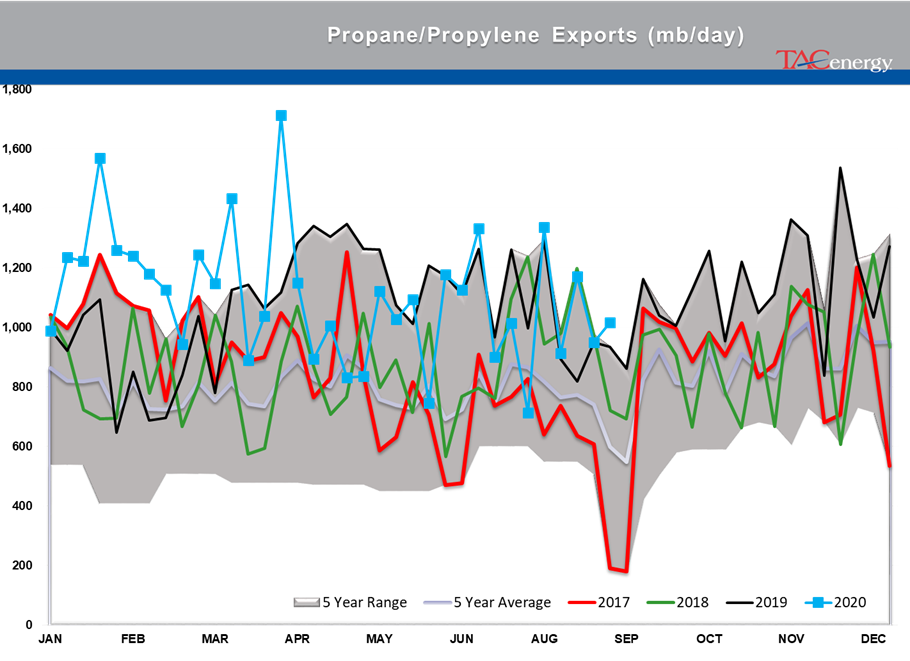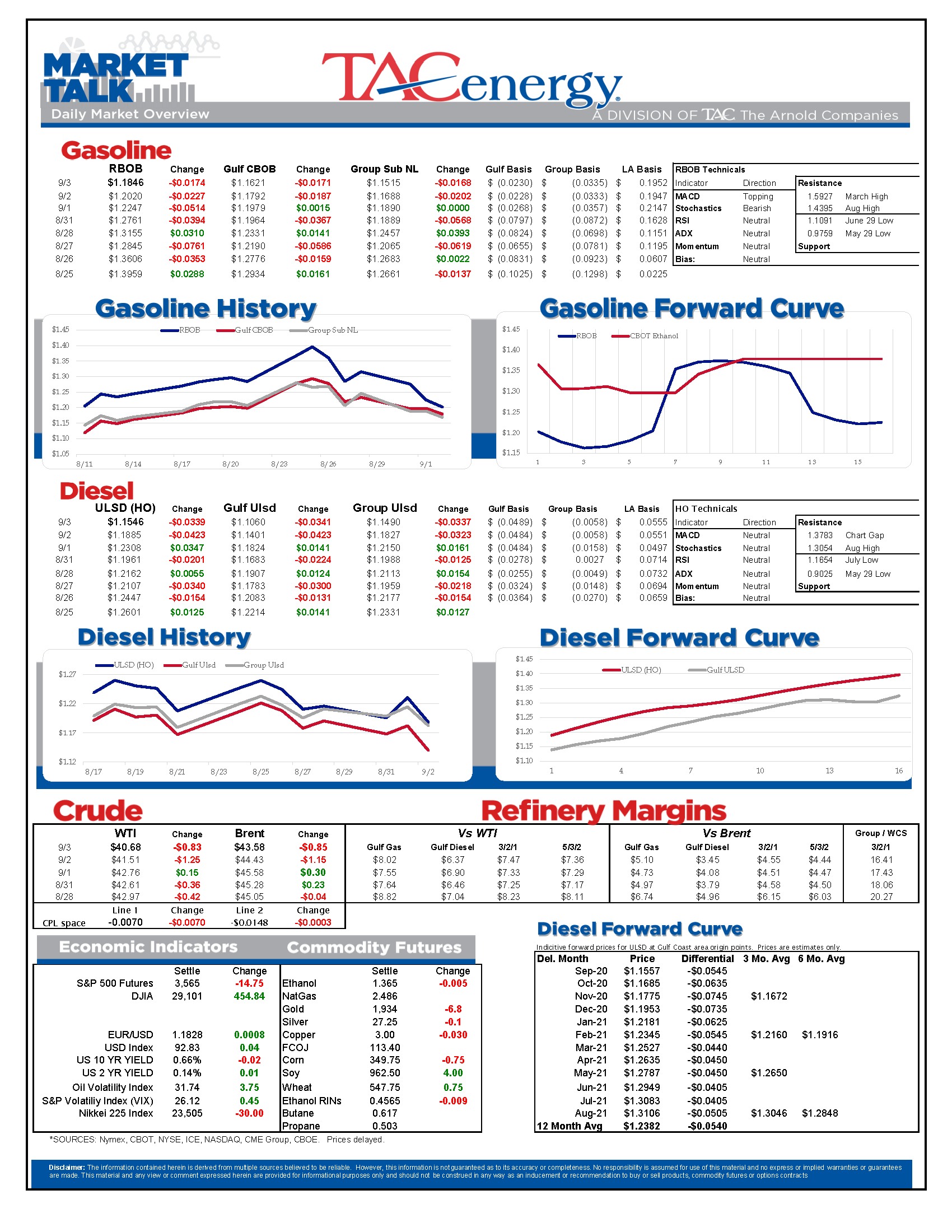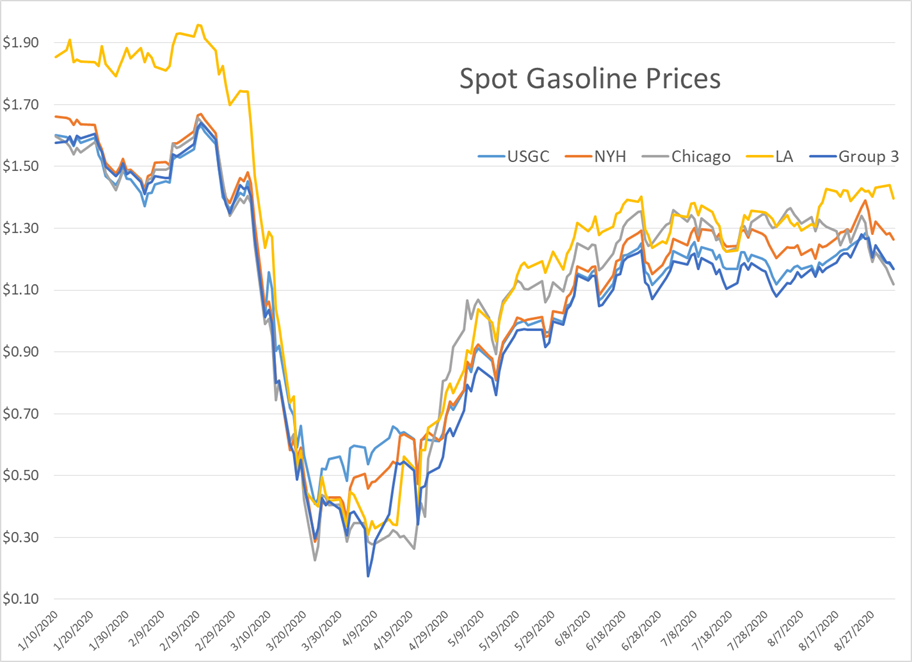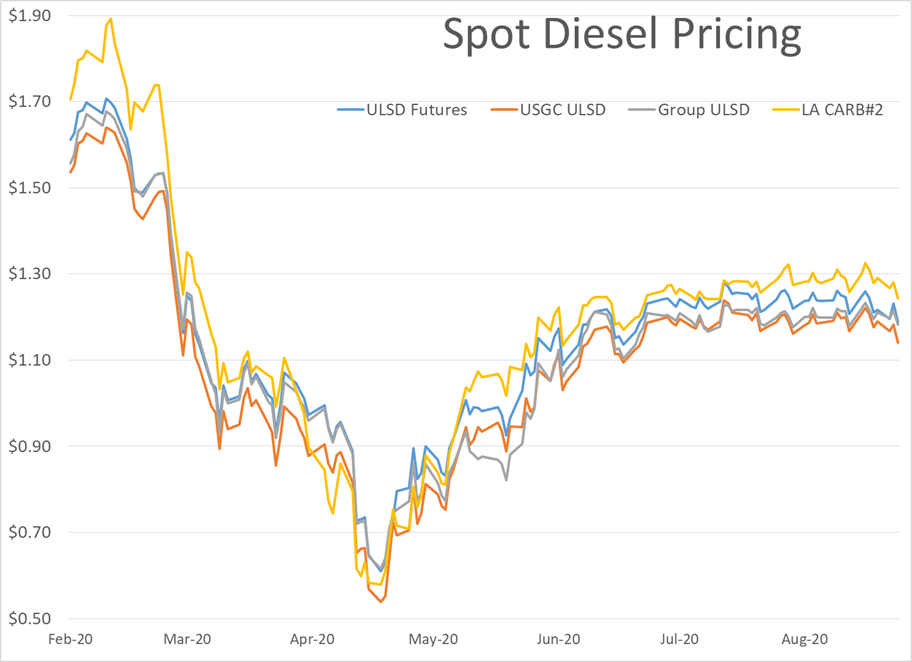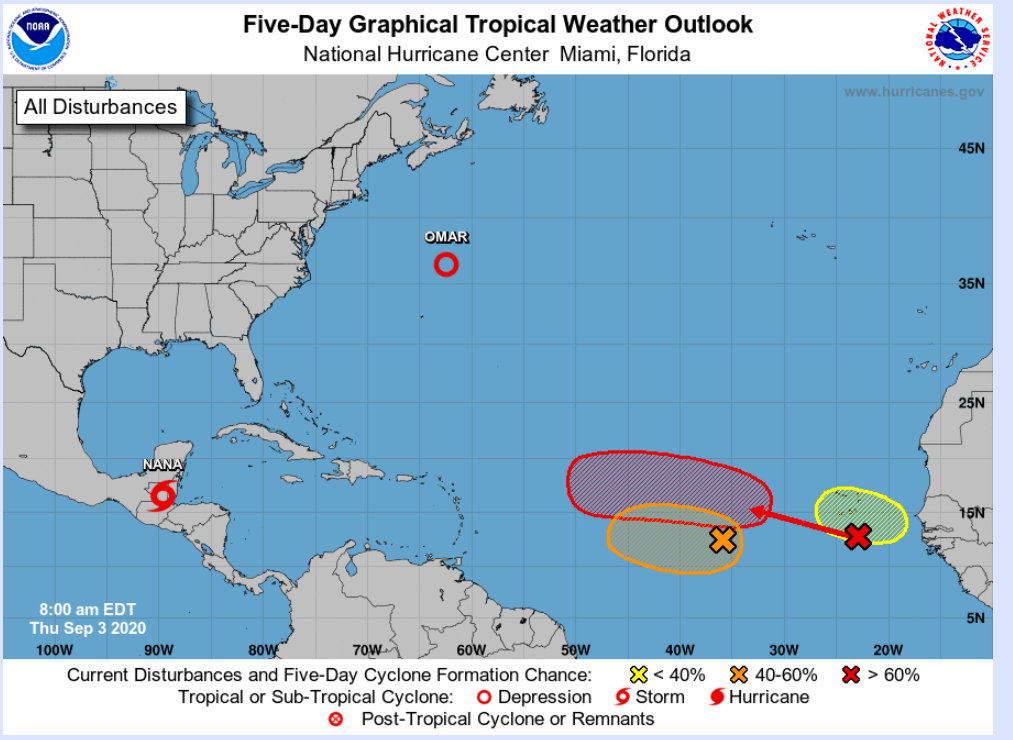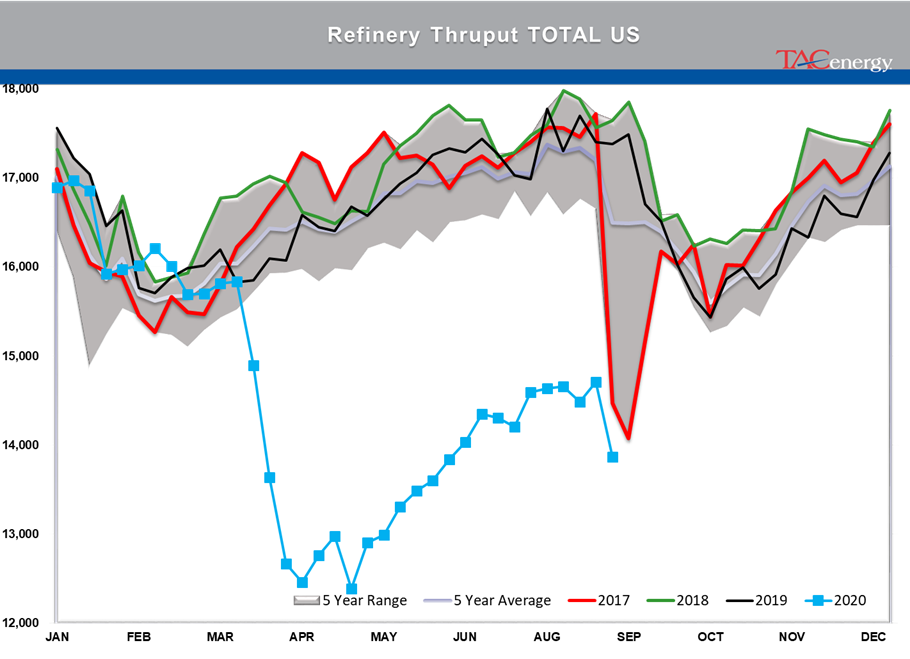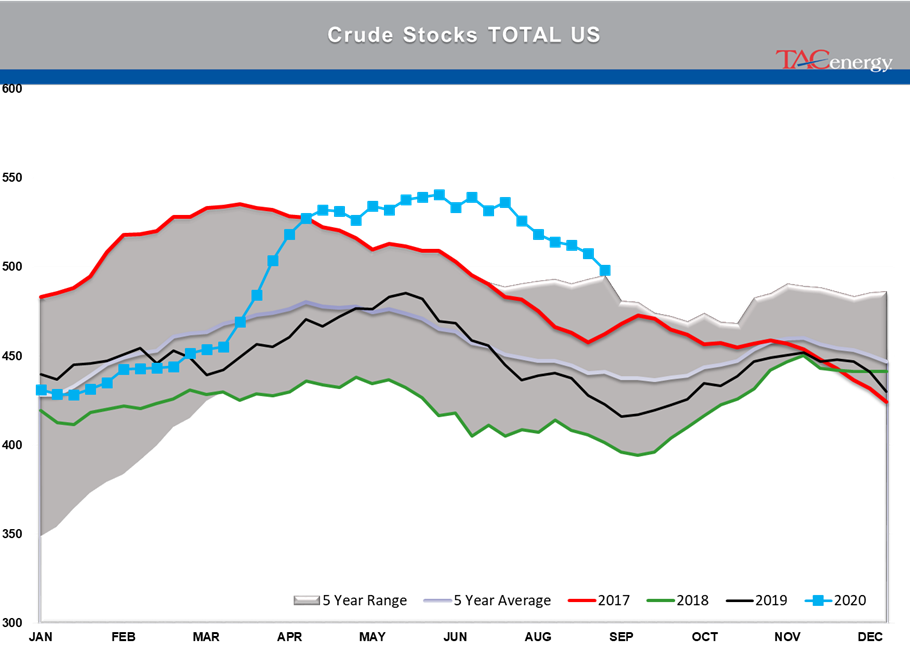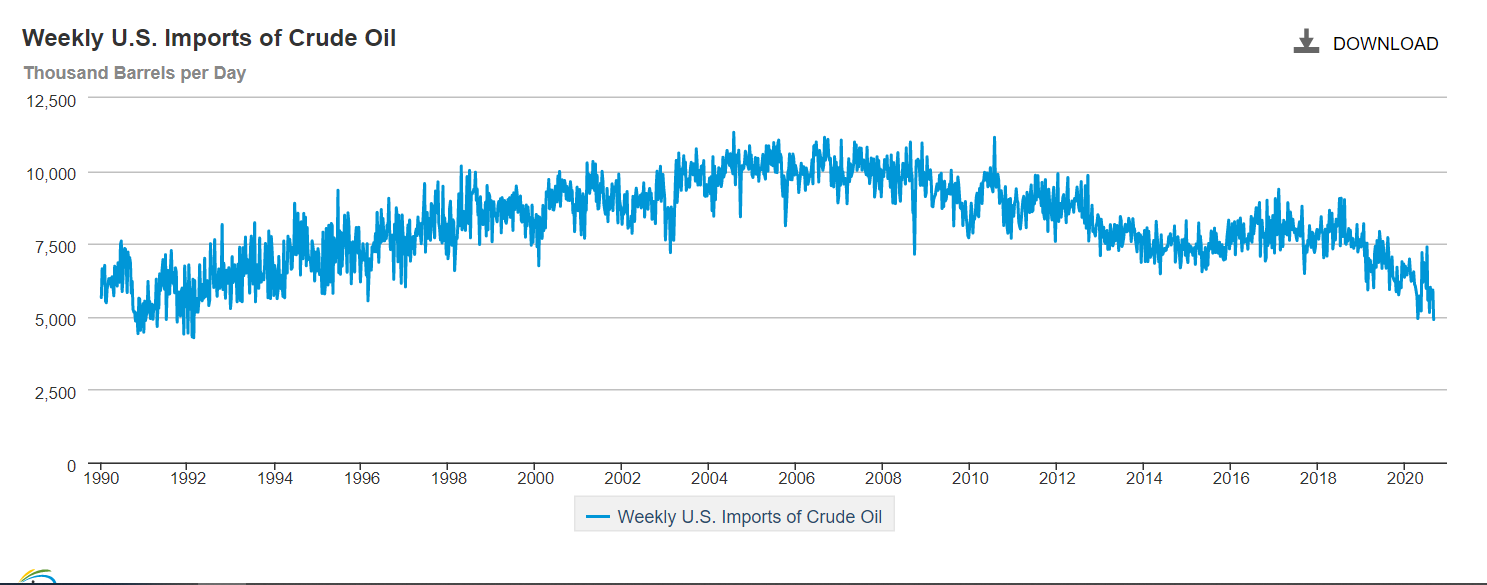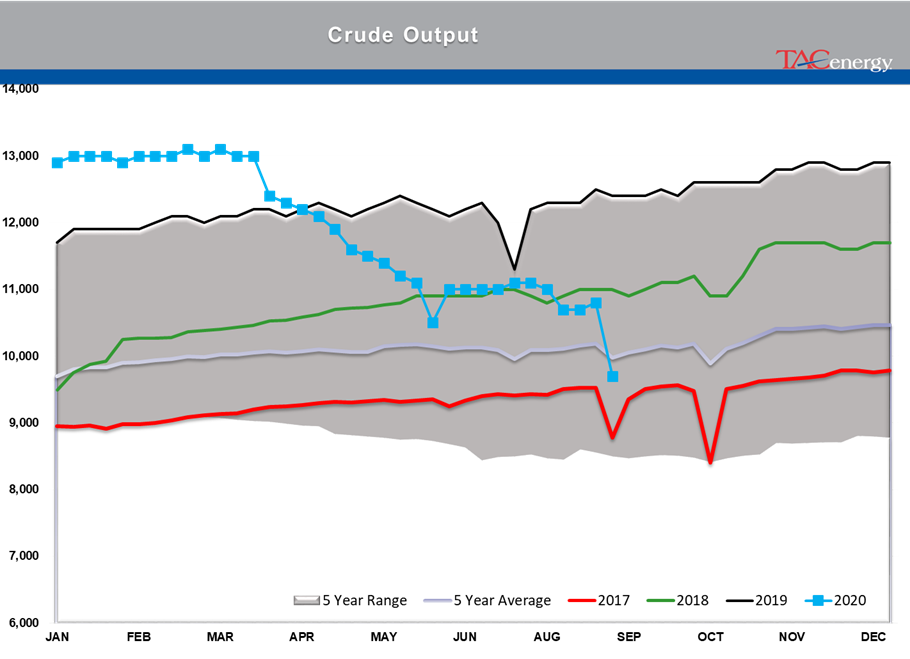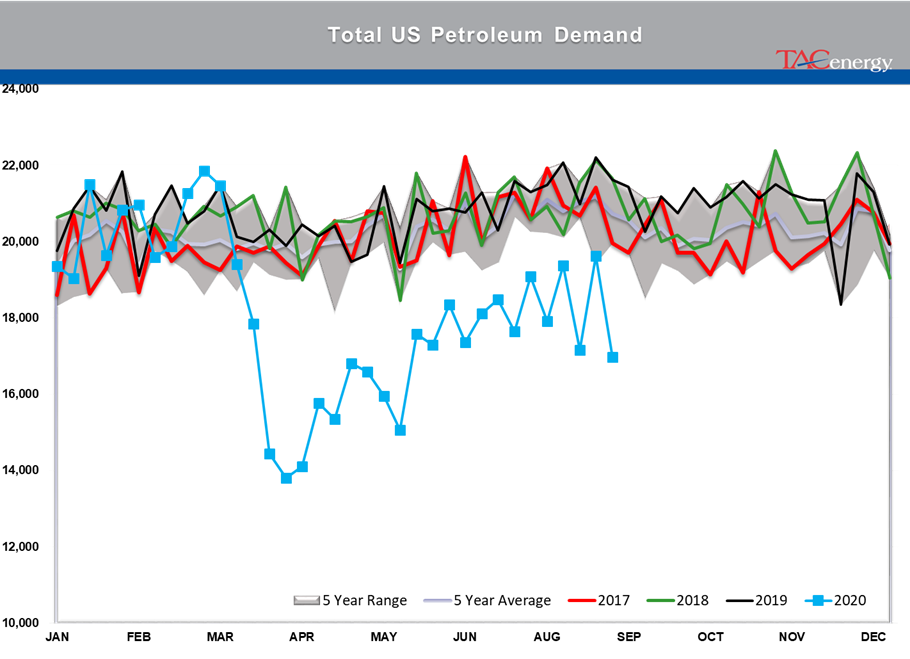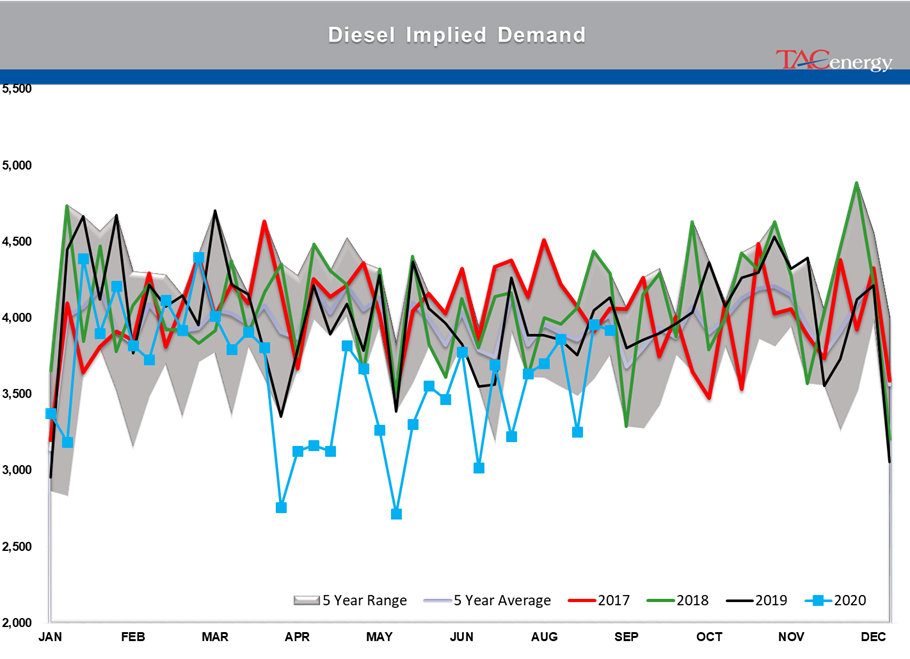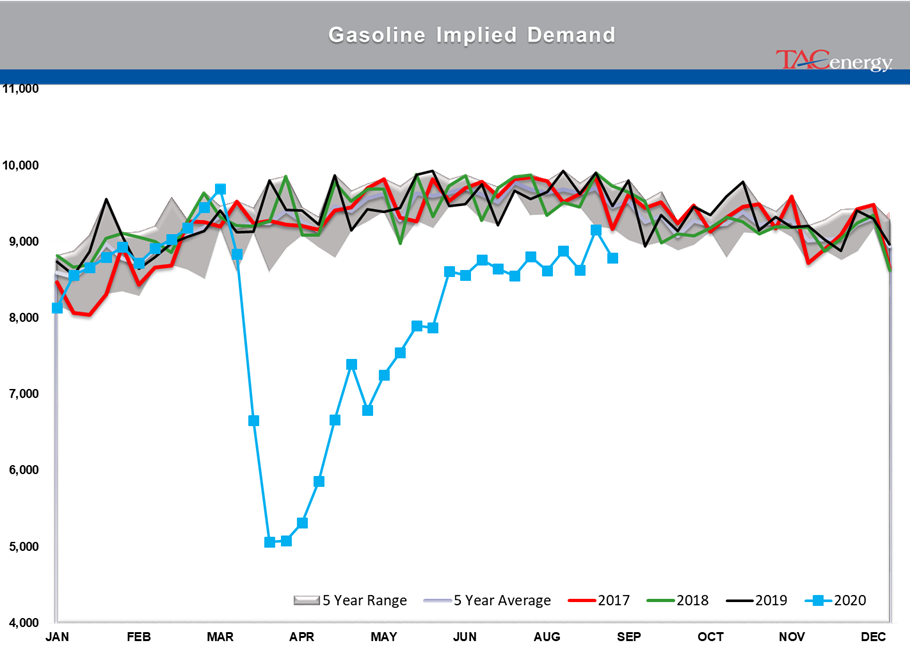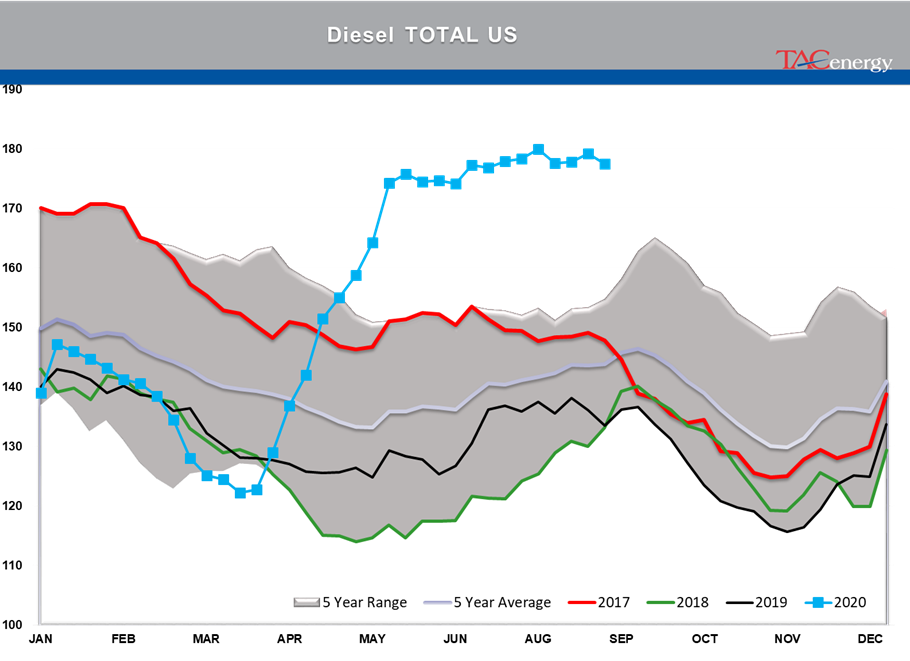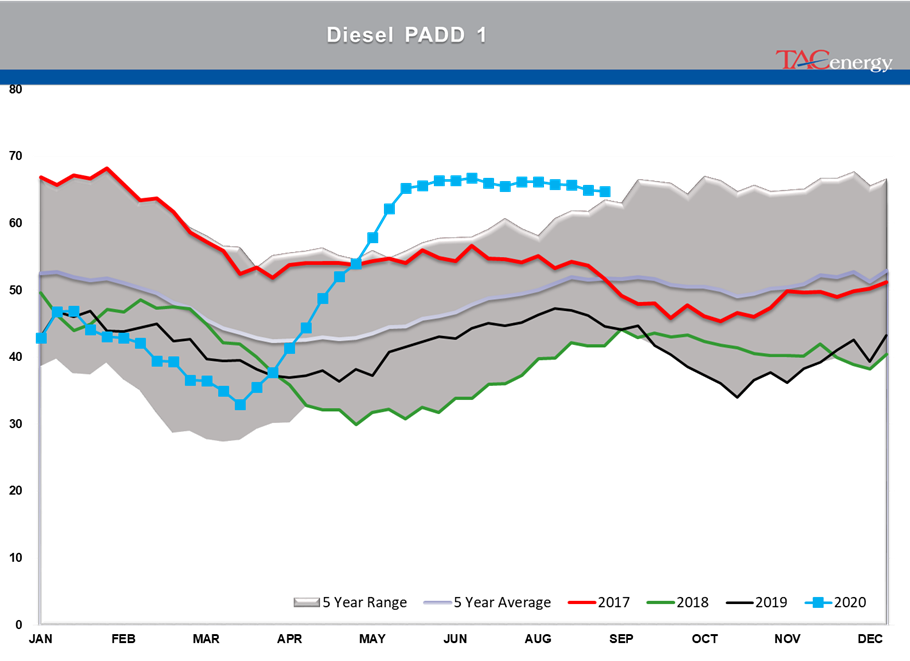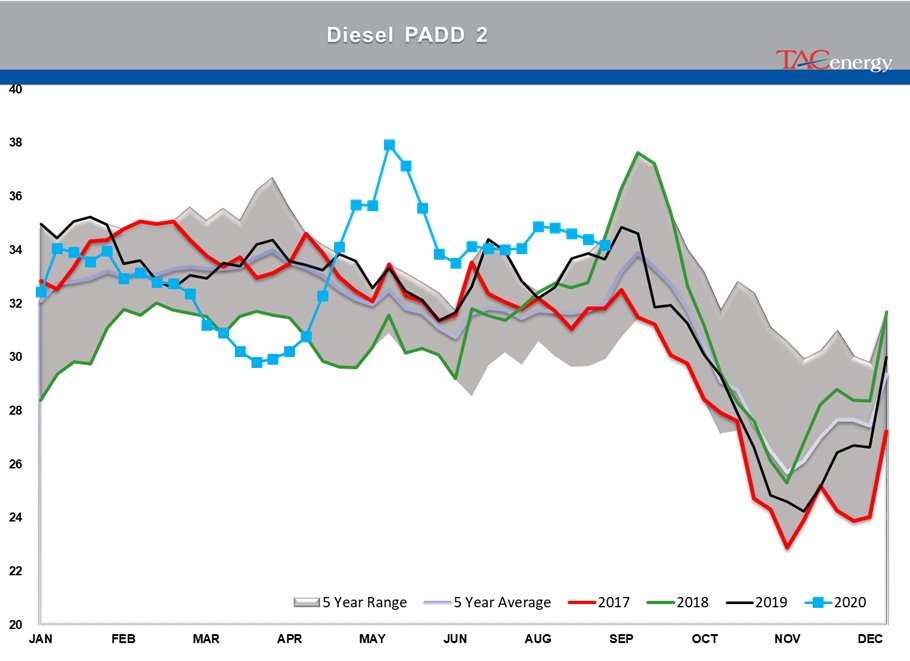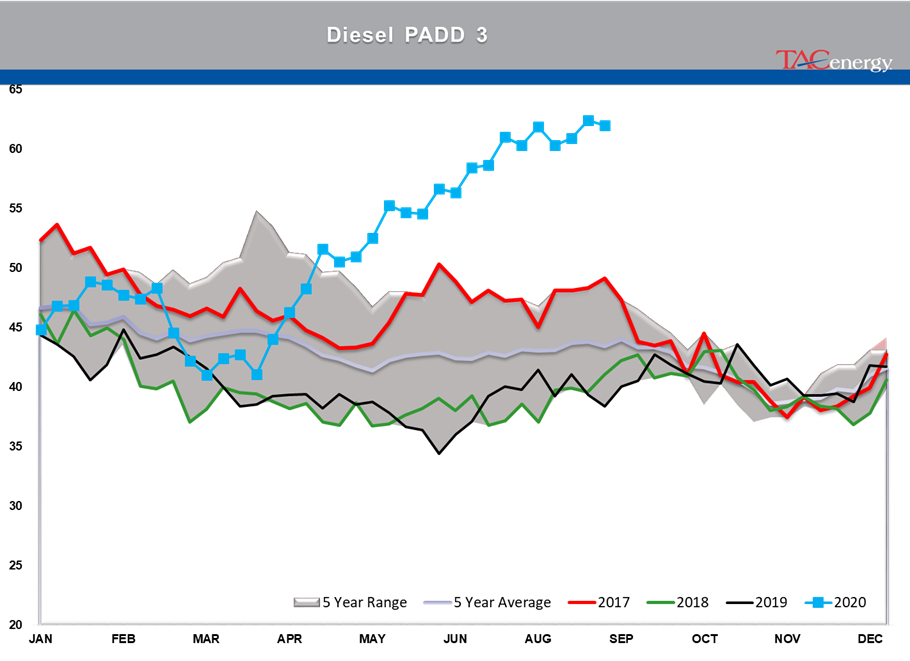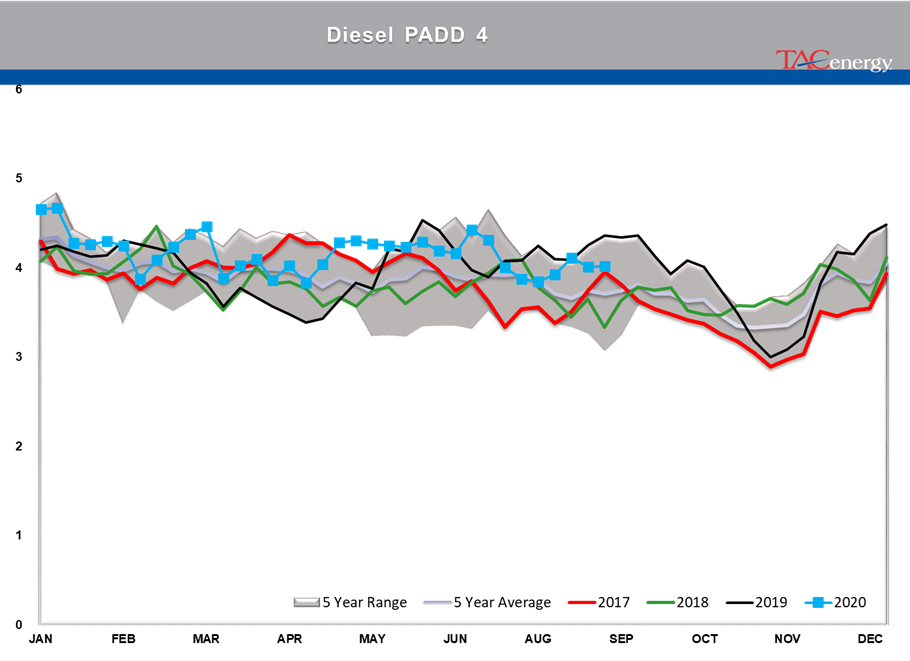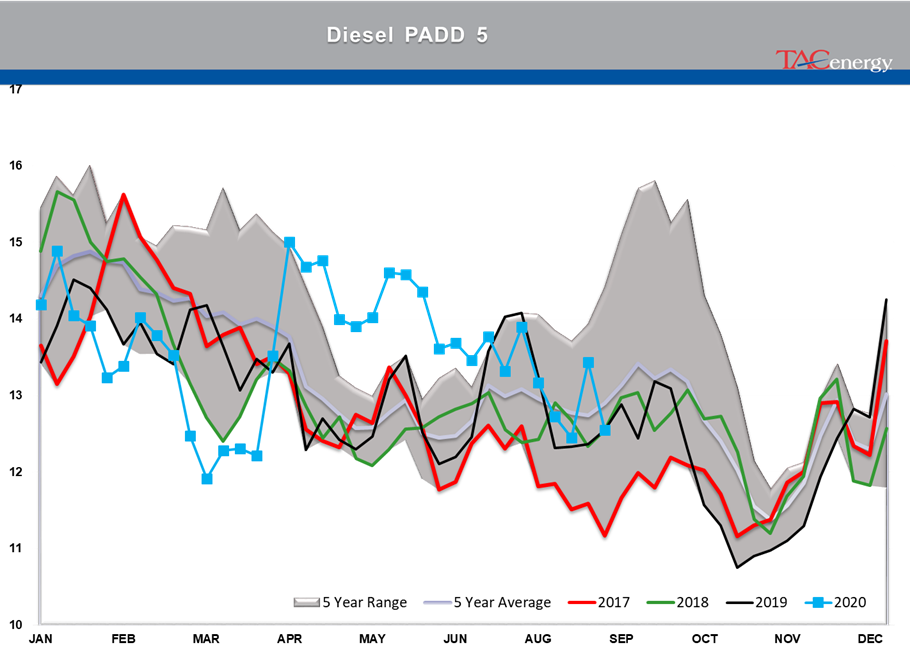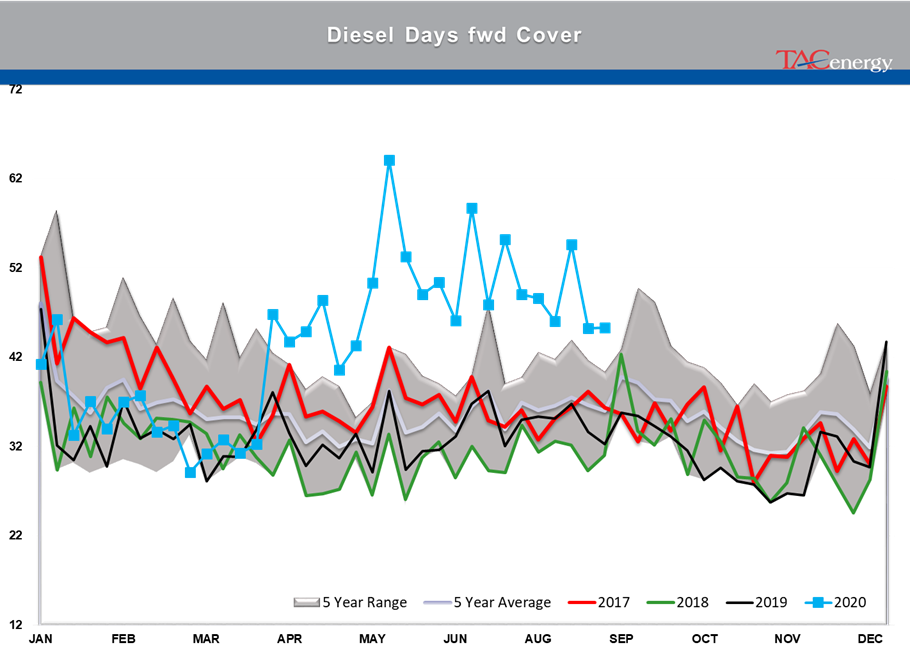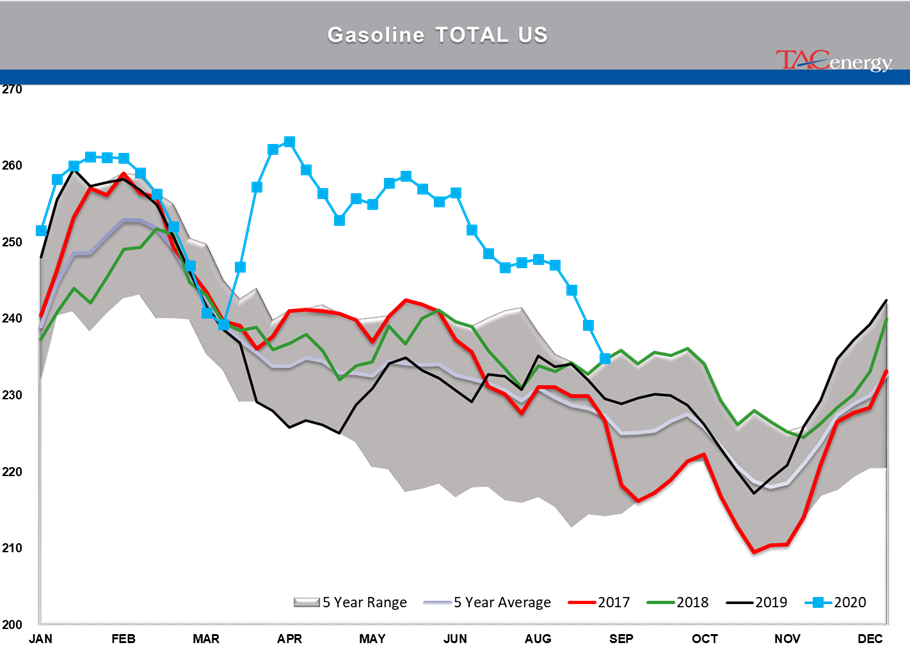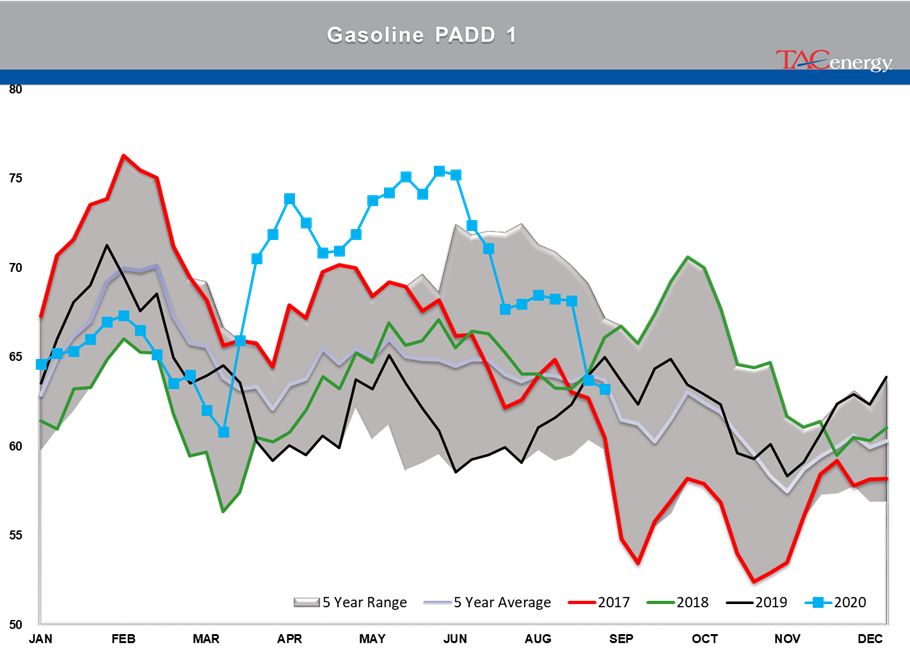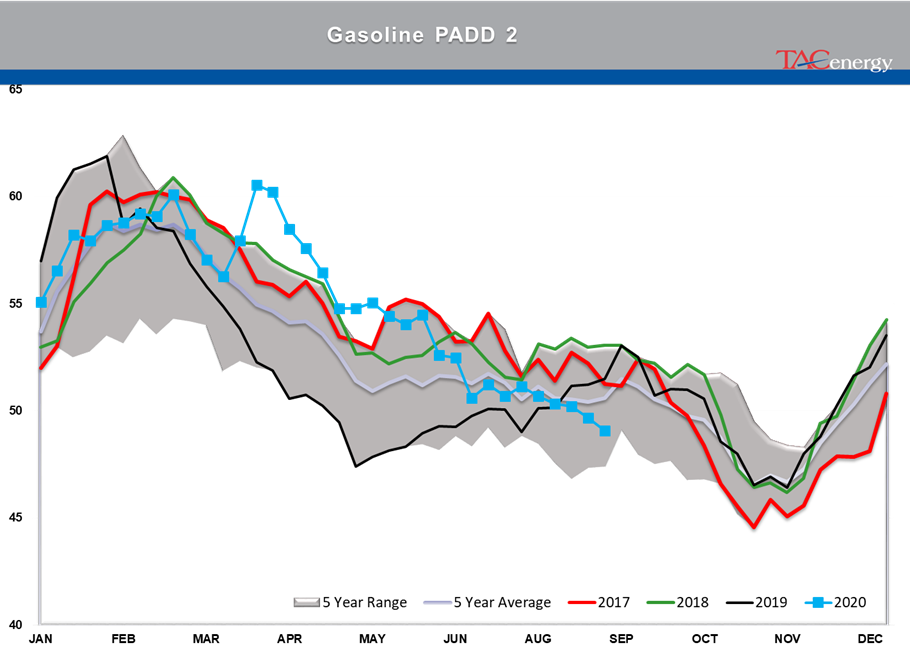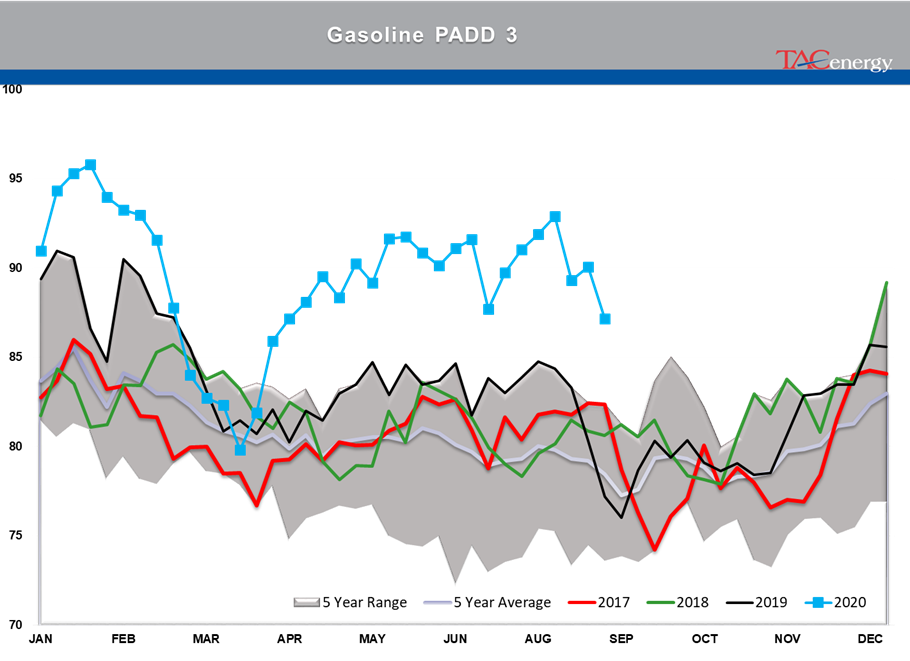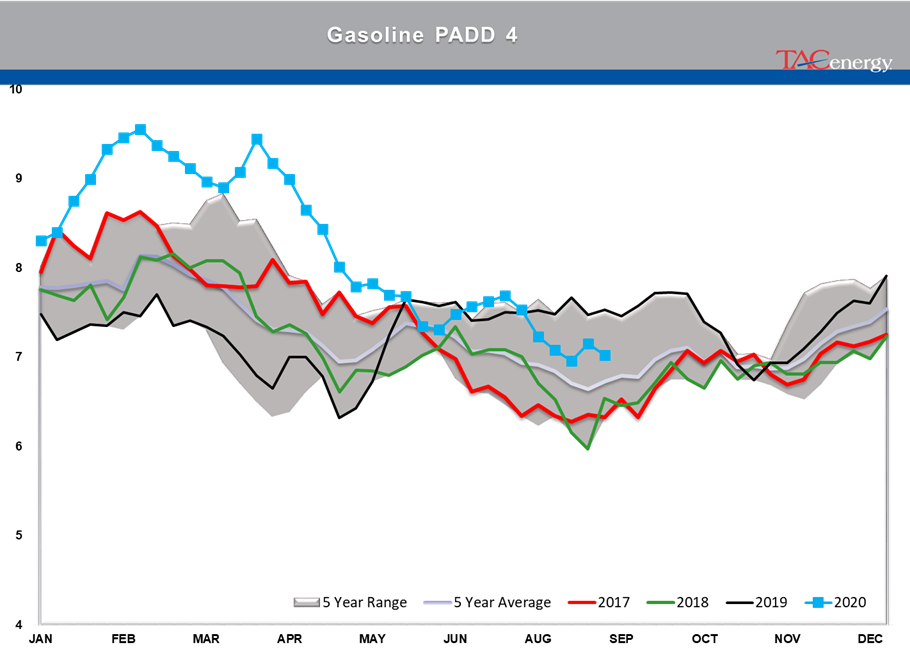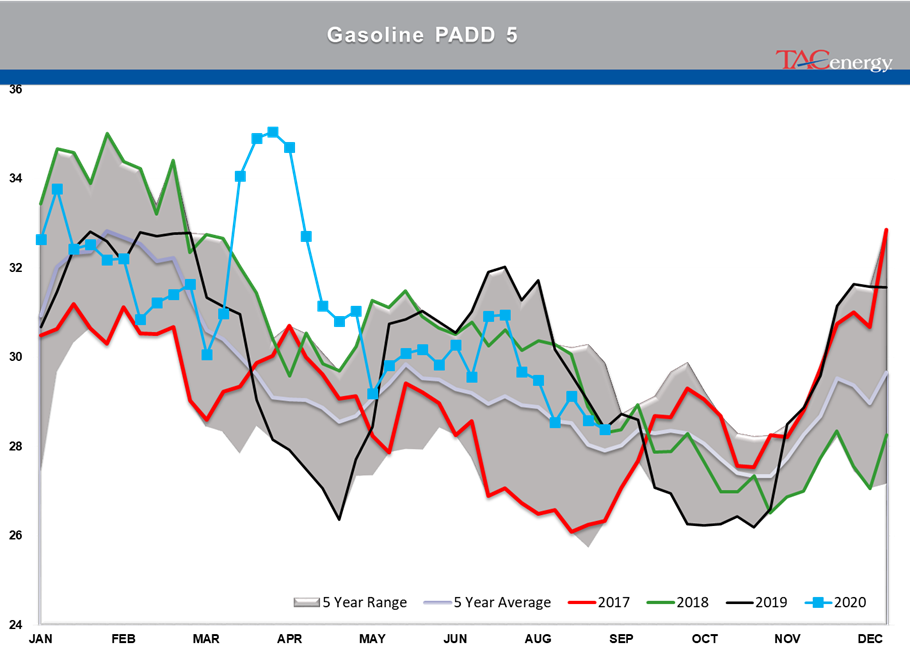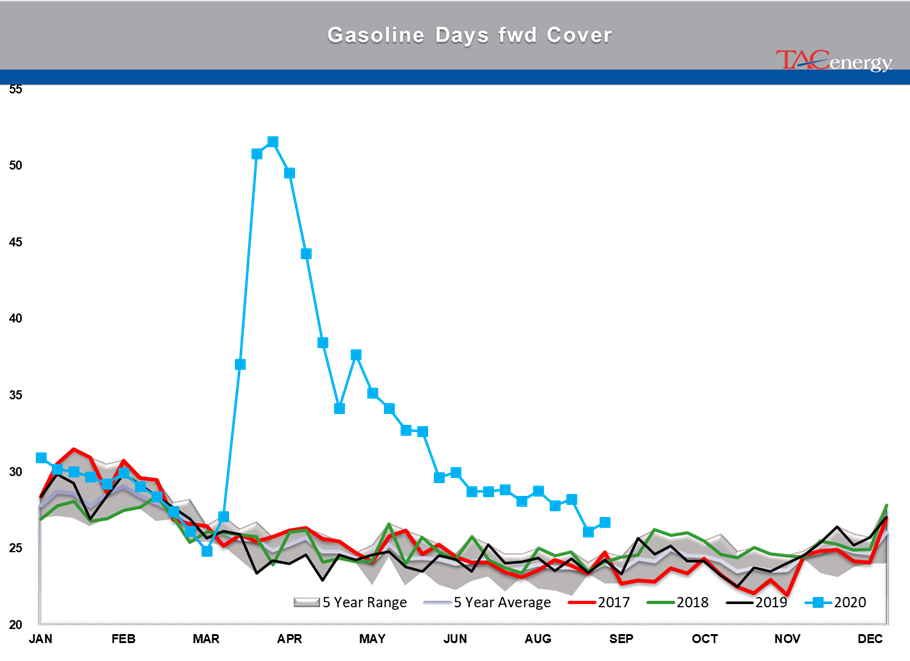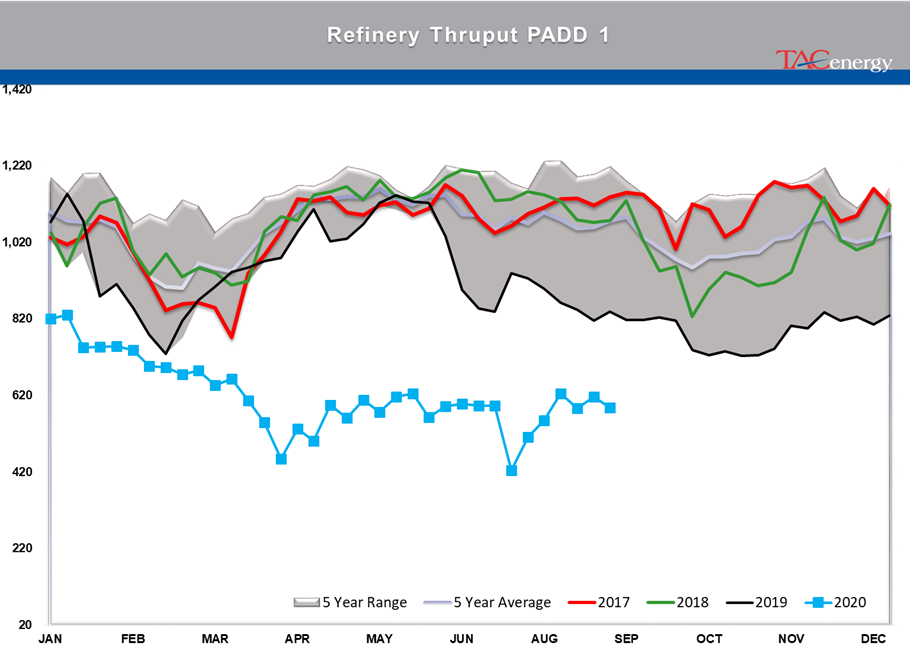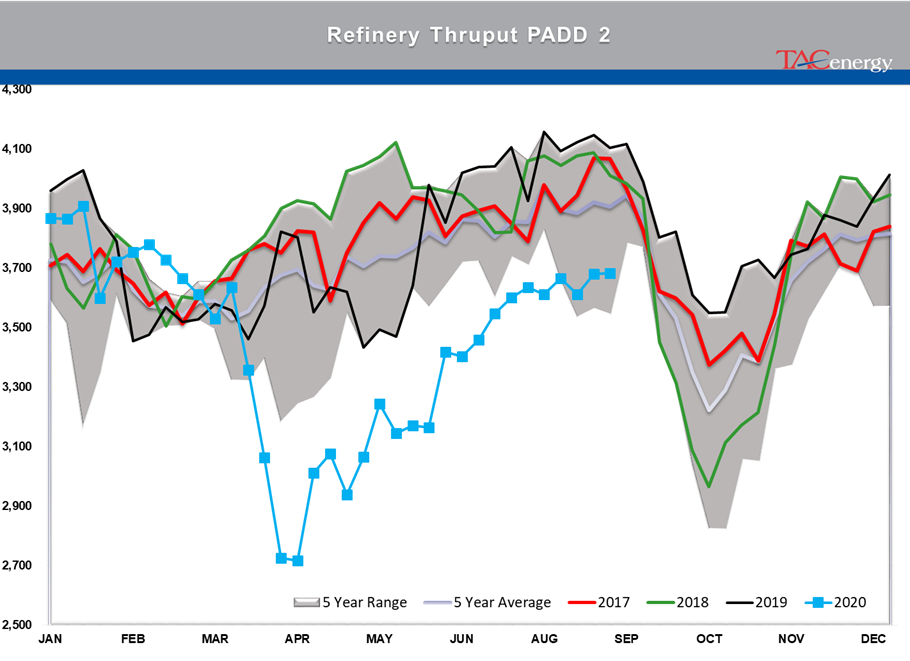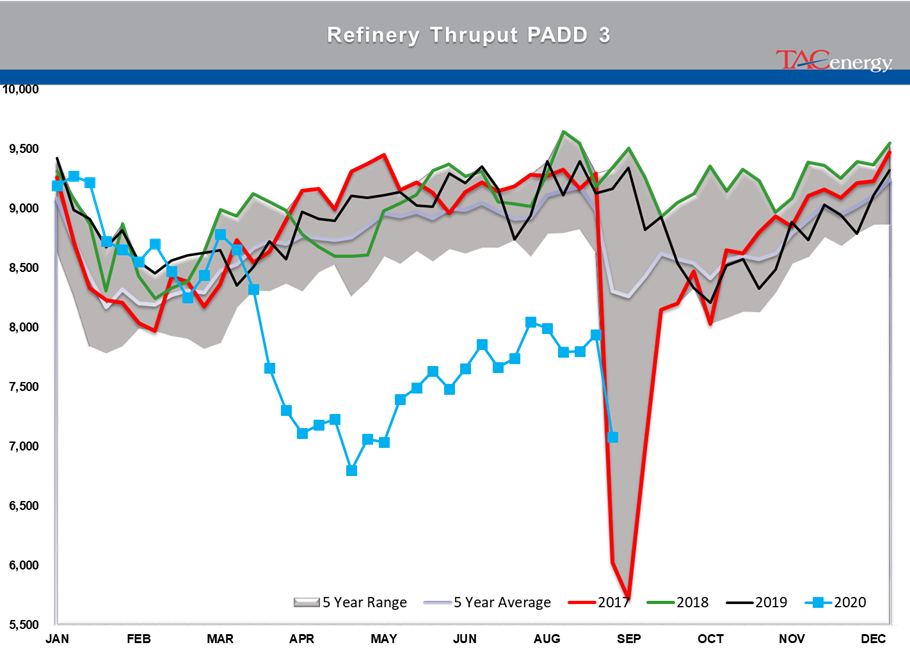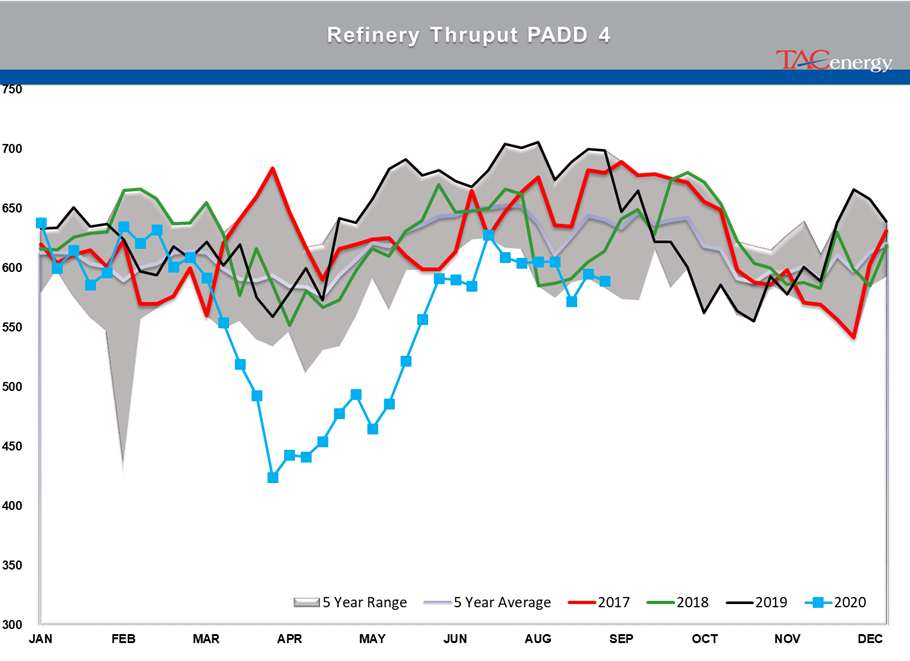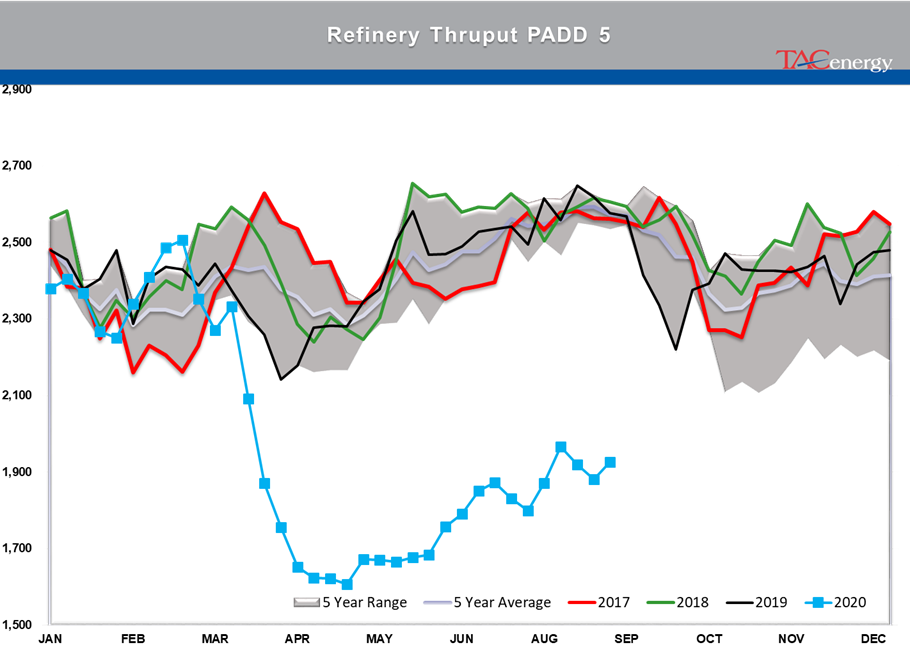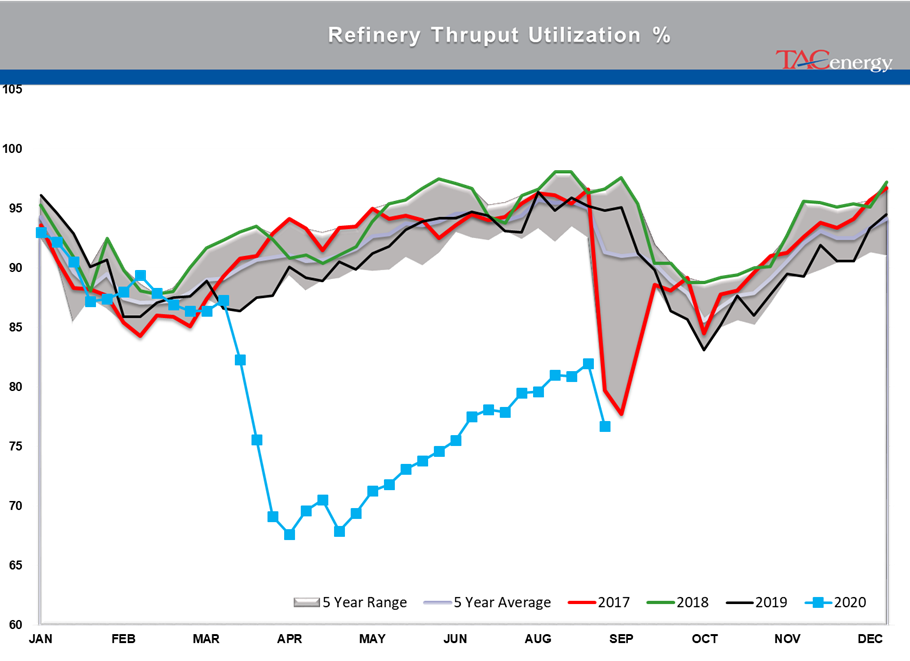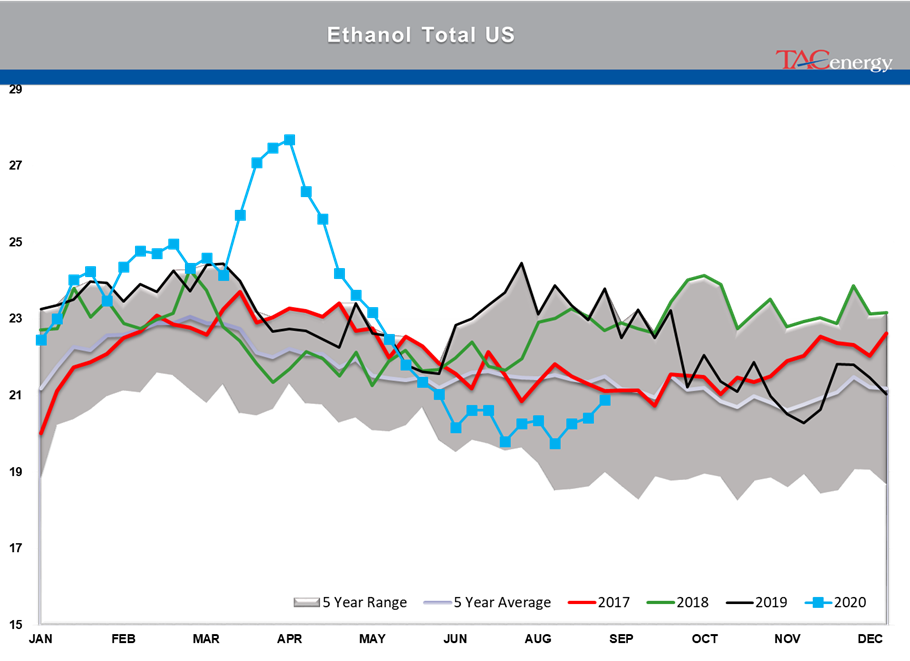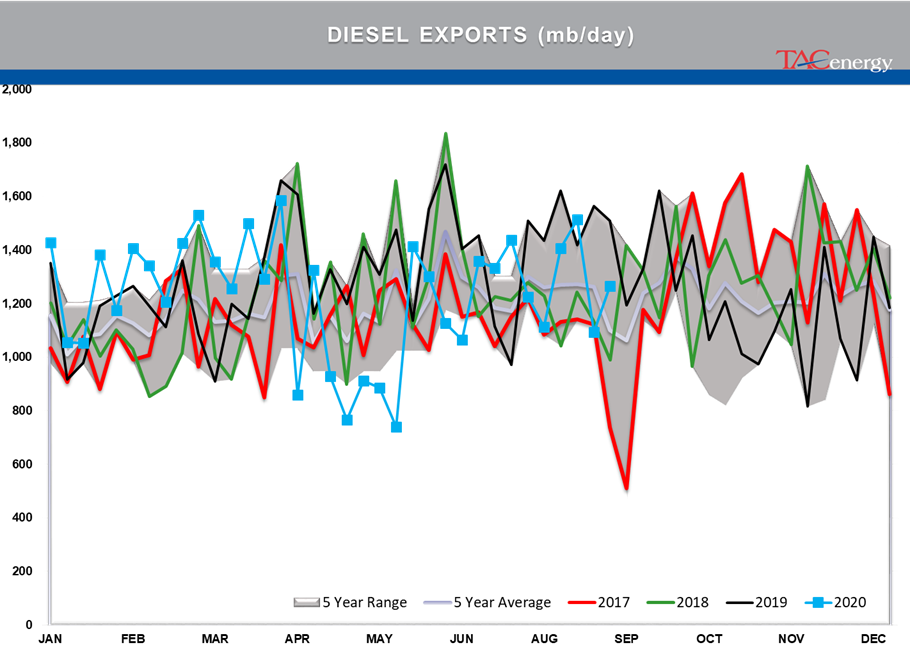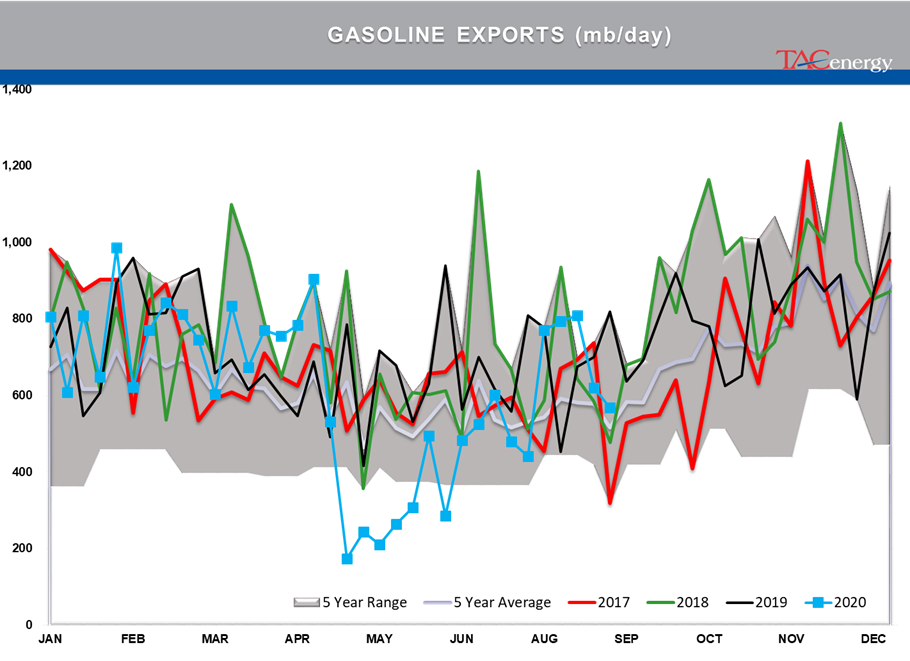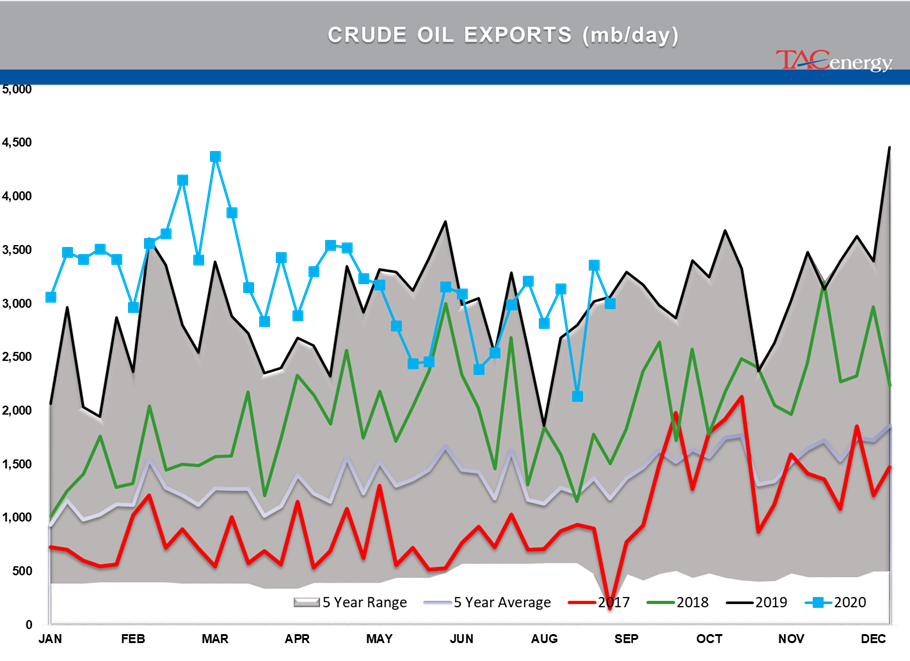Is A Collapse Imminent?

Just a few days after pushing six month highs, energy futures are hitting multi-month lows this morning, and threatening a technical breakdown that could bring product prices back below one dollar/gallon. A rising dollar, softer equities and concerns for fall demand all taking credit for the early selling. While the drop has been significant – gasoline prices in some markets are down more than 20 cents in a week - we have seen multiple similar moves this summer only to bounce each time technical support gets tested, so it’s still too soon to say a collapse is imminent.
The disruptions to the energy operations along the Gulf Coast from Hurricane Laura are easy to see in the DOE charts below, but you’ll also notice how most operational issues pale in comparison to what we saw from Harvey in 2017, which provides some insight into why the industry had a huge sigh of relief when the storm shifted east.
Oil imports reached their lowest level in 28 years as ships stayed out to sea to ride out the storm, crude oil output dropped by more than 10 percent to its lowest in three years, as Gulf of Mexico platforms were shuttered temporarily and refinery runs dropped by one million barrels per day. This all added up to substantial inventory draws. The fact that most of these operations are already returning to normal within one week after landfall helps explain why the market sold off following the report, as concerns quickly shifted to issues with demand rather than a threat to supply.
The exception to that rule is the refinery output number. Early reports suggest it could be several weeks before the two Lake Charles area facilities operating before the storm might be able to attempt a restart, and with the fall turnaround season about to kick off, we could see more declines in run rates over the next several weeks.
In addition to the storm-related issues, demand and margins aren’t encouraging a resurgence in refinery runs either. The weekly estimate from the DOE showed total U.S. petroleum demand dropping to a 13 week low, and the flush in product prices this week has crack spreads pushing multi-year lows. A WSJ article this morning suggests that European refiners are most likely to see the next wave of closures and conversions as the industry deals with a glut of refining capacity, while U.S. facilities will benefit from their outlets to central and south America.
Speaking of central America, Hurricane Nana made landfall in Belize overnight, while Omar continues tracking out to sea. There are three more potential systems being tracked by the NHC, one of which has 70 percent odds of further development, making it likely we’ll see Paulette named just in time to hit the peak of the season.
Click here to download a PDF of today's TACenergy Market Talk.
Latest Posts
Week 16 - US DOE Inventory Recap
Energy Markets Trading Quietly In The Red As Ethanol Prices Rally To Five-Month High
The Struggle For Renewable Producers Continues As A Rapid Influx Of Supply And Crashing Credit Prices Make Biodiesel
After Years Of Backwardation, Diesel Prices Have Slipped Into Contango Over The Past Week
Social Media
News & Views
View All
Week 16 - US DOE Inventory Recap

Energy Markets Trading Quietly In The Red As Ethanol Prices Rally To Five-Month High
Energy markets are trading quietly in the red to start Wednesday’s session after a healthy bounce Tuesday afternoon suggested the Israel-Iran-linked liquidation had finally run its course.
There are reports of more Ukrainian strikes on Russian energy assets overnight, but the sources are sketchy so far, and the market doesn’t seem to be reacting as if this is legitimate news.
Ethanol prices have rallied to a 5-month high this week as corn and other grain prices have rallied after the latest crop progress update highlighted risks to farmers this year, lower grain export expectations from Ukraine, and the approval of E15 blends this summer despite the fact it pollutes more. The rally in grain and renewables prices has also helped RIN values find a bid after it looked like they were about to test their 4-year lows last week.
The API reported small changes in refined product inventories last week, with gasoline stocks down about 600,000, while distillates were up 724,000. Crude oil inventories increased by 3.2 million barrels according to the industry-group estimates. The DOE’s weekly report is due out at its normal time this morning.
Total reported another upset at its Port Arthur refinery that’s been a frequent flier on the TCEQ alerts since the January deep freeze knocked it offline and damaged multiple operating units. This latest upset seems minor as the un-named unit impacted was returned to normal operations in under an hour. Gulf Coast basis markets have shrugged off most reports of refinery upsets this year as the region remains well supplied, and it’s unlikely we’ll see any impact from this news.
California conversely reacted in a big way to reports of an upset at Chevron’s El Segundo refinery outside of LA, with CARBOB basis values jumping by more than a dime. Energy News Today continued to show its value by reporting the upset before the flaring notice was even reported to area regulators, proving once again it’s ahead of the curve on refinery-related events. Another industry news outlet meanwhile struggled just to remember where the country’s largest diesel seller is located.
Click here to download a PDF of today's TACenergy Market Talk

The Struggle For Renewable Producers Continues As A Rapid Influx Of Supply And Crashing Credit Prices Make Biodiesel
The sigh of relief selloff continues in energy markets Tuesday morning, with gasoline prices now down more than 20 cents in 7 sessions, while diesel prices have dropped 26 cents in the past 12. Crude oil prices are within a few pennies of reaching a 1 month low as a lack of headlines from the world’s hot spots allows some reflection into the state of the world’s spare capacity for both oil and refined products.
Gasoline prices are trading near a 6-week low this morning, but still need to fall about another nickel in order to break the weekly trendline that pushed prices steadily higher since December. If that trend breaks, it will be safer to say that we saw the end of the spring gasoline rally on April 12th for the 2nd year in a row. Last year RBOB futures peaked on April 12 at $2.8943 and bottomed out on May 4th at $2.2500. The high (at this point) for this year was set on April 12th at $2.8516, and the low overnight was $2.6454.
It’s not just energy commodities that are seeing an unwind of the “flight to safety” trade: Gold prices had their biggest selloff in 2 years Monday and continue to point lower today. Just how much money poured into commodities in the weeks leading up to the direct confrontation between Israel and Iran is unclear, but we have seen in year’s past that these unwind-events can create a snowball effect as traders can be forced to sell to cover their margin calls.
Supply > Demand: The EIA this morning highlighted the record setting demand for natural gas in the US last year, which was not nearly enough to offset the glut of supply that forced prices to a record low in February. A shortage of natural gas in Europe was a key driver of the chaotic markets that smashed just about every record in 2022, and an excess of natural gas supply in Europe and the US this year is acting as a buffer, particularly on diesel prices.
The struggle for renewable producers continues as a rapid influx of supply and crashing credit prices make Biodiesel, RD and SAF unprofitable for many. In addition to the plant closures announced in the past 6 months, Vertex Energy reported Monday it’s operating its Renewable Diesel facility in Mobile AL at just 50% of capacity in Q1. The truly scary part for many is that the $1/gallon Blender's tax credit ends this year and is being replaced by the “Clean” Fuel production credit that forces producers to prove their emissions reductions in order to qualify for an increased subsidy. It’s impossible to say at this point how much the net reduction will be for domestic producers, but importers will get nothing, and at current CI values, many biodiesel producers may see their “blend credit” cut by more than half.
Click here to download a PDF of today's TACenergy Market Talk.
